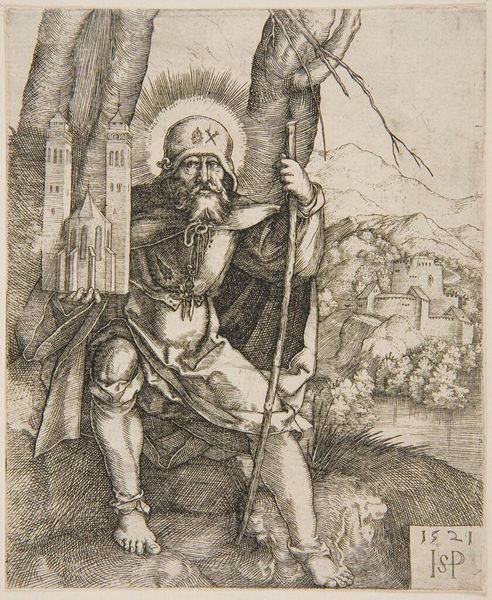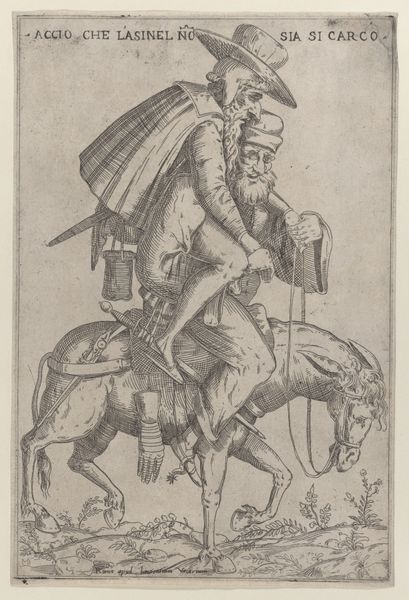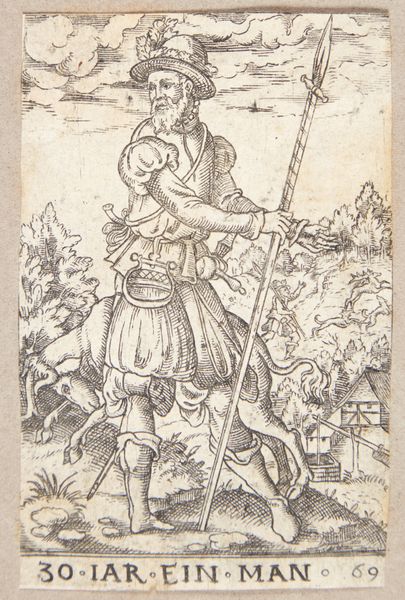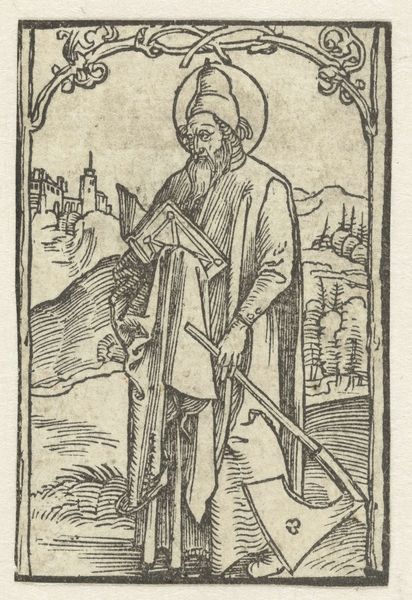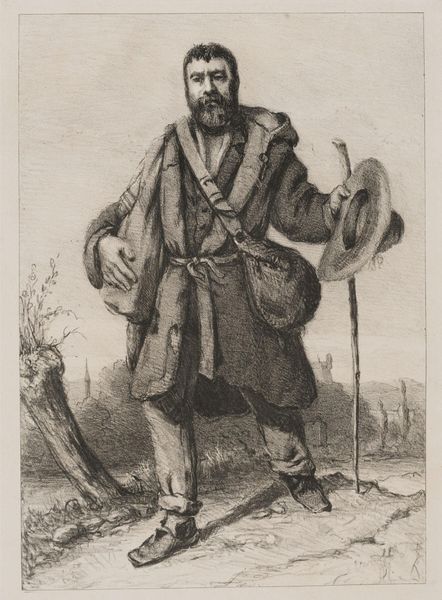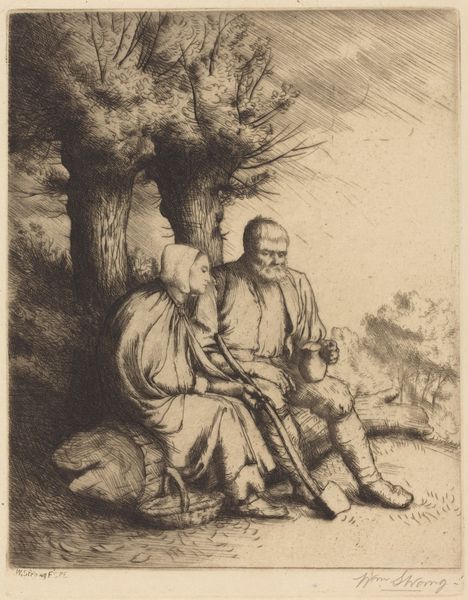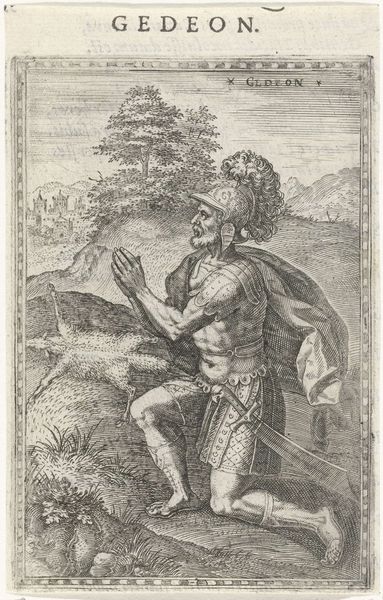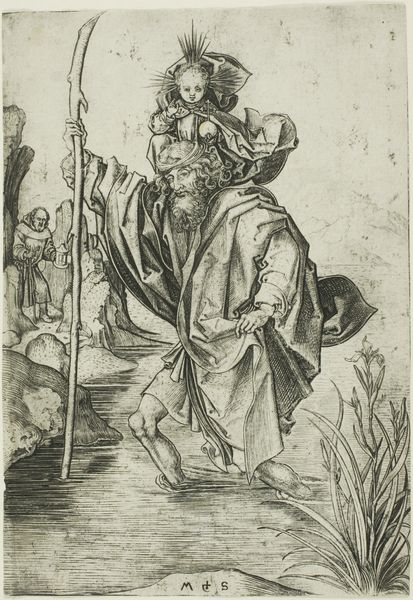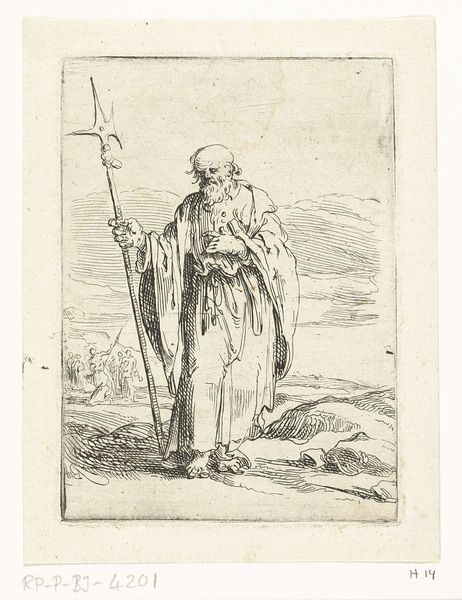
Dimensions: 145 × 110 mm (image/sheet, trimmed to platemark and substantially trimmed at top)
Copyright: Public Domain
Curator: I’m drawn to the palpable sense of piety that seems to radiate from this 1521 engraving. It’s entitled *Saint Sebald*, made by Sebald Beham. Editor: It’s strikingly stark, isn't it? The almost severe black and white lends it a monumental weight, despite being executed on paper. And the gaze... it’s unflinching, piercing, as though he's looking directly into your soul. Curator: Precisely! It’s designed, after all, to fix the viewer in place within the framework of faith. Consider the imagery surrounding Saint Sebald: he's cradling a miniature version of the Nuremberg church he is credited with founding; atop his head is a halo indicating sainthood, alongside his pilgrim's hat. Note that the composition itself acts as a visual sermon of sorts. Editor: That tiny architectural model offers an important cultural reference. Beham was actively working within the religious, social, and artistic atmosphere of Nuremberg. Printmaking during this period became a popular tool for spreading propaganda surrounding the Reformation, religious doctrine, and cultural values to mass audiences. It's no coincidence Beham places the iconic church, the Sebalduskirche, in the saint's hands, suggesting Sebald's legacy, its endurance against the turbulence of the Reformation itself. Curator: And beyond this immediate historical context, one can discern patterns in visual rhetoric that stretch back centuries. Consider the staff; that is, a potent emblem of both earthly pilgrimage, as well as a link between spiritual authority and pastoral leadership—a role frequently adopted for Saint Sebald. I can discern similar symbols recurring throughout medieval and Renaissance iconography, underscoring the universal appeal of this Saint Sebald over time. Editor: Looking at this print through the lens of art as propaganda, what can we infer? What do you make of this saint who sits outside within natural landscape as opposed to the confines of a gothic church interior? Curator: Herein lies, perhaps, the symbolic genius of it all. It anchors him within the material world, but equally signals divine presence and timeless relevance through his attributed virtues and halo. In all, it becomes a tool for shaping, refining, and reaffirming faith in a time of acute upheaval. Editor: A beautifully enduring testament, truly, to the intertwined narratives of art, faith, and history. Thank you!
Comments
No comments
Be the first to comment and join the conversation on the ultimate creative platform.
